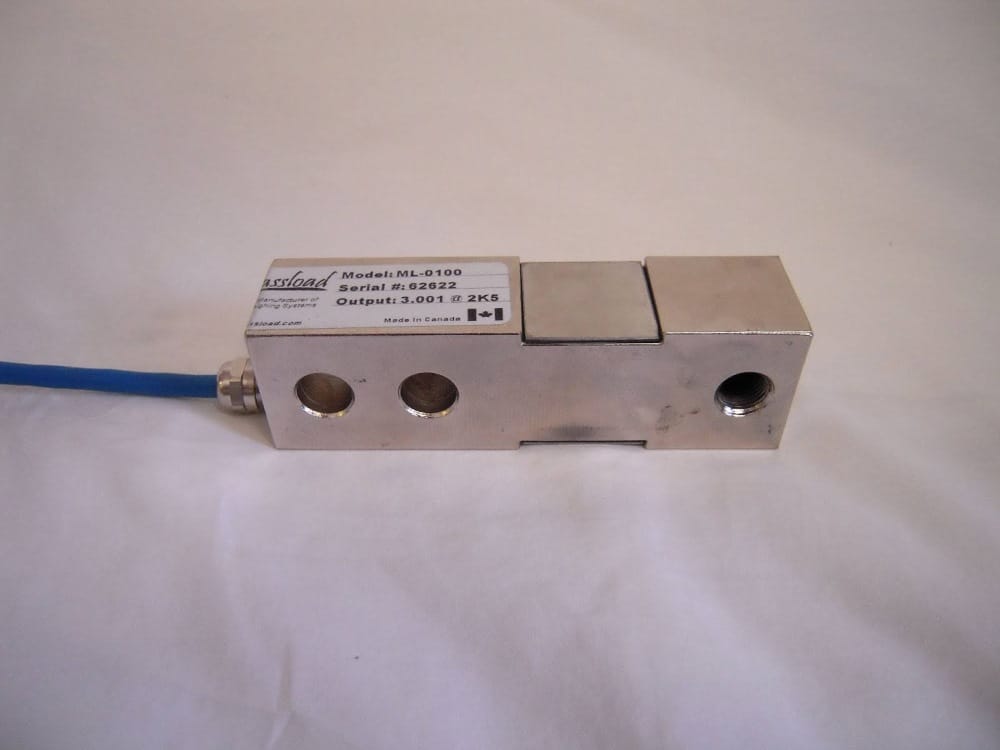
Shear beams are a specific type of load cell that can measure force using the principle of shear stress.
They can be used in a wide range of industrial applications, and understanding how they work is the first step to making the most of this device.
In this article, we will take a closer look at the way they are designed, their essential functions, and the cases in which they excel.
A Closer Look At The Design And Function Of Shear Beam Load Cells
At its essence, a shear beam load cell is a specialized sensor designed to measure force or weight by exploiting the principle of shear stress.
Unlike other types of load cells like bending bins, shear beam load cells operate by subjecting a rectangular or elongated sensing element to shear stress.
Shear beam methodology is used for higher capacities and is highly accurate while bending beam is used for low capacities and is not as accurate as a shear beam.
Thanks to their rugged construction and ability to withstand harsh environments, these load cells are trusted by industries such as mining, oil and gas, agriculture, and more, where precision and reliability are non-negotiable.
How Does a Shear Beam Load Cell Work?
As the metal block deforms under the applied load, the strain gauges placed on a shear web inside stretch or compress accordingly, altering their electrical resistance in the process. This change in resistance is then converted into an electrical signal—a delicate dance of electrons that holds the key to precise weight measurement.
To ensure unparalleled accuracy and reliability, shear beam load cells often come equipped with multiple strain gauges arranged in a Wheatstone bridge configuration.
This electrical signal travels to a sophisticated indicator or controller, where it’s translated into tangible weight readings displayed on a screen.
What Is the Use of Shear Beam Load Cells?
From weighing incoming shipments of raw materials to monitoring inventory levels and ensuring accurate dosing in production processes, these load cells are the unsung heroes behind the scenes, quietly but diligently performing their duty.
What Sets Shear Beam Load Cells Apart?
Let’s delve into the unique characteristics and advantages that make shear beam load cells stand out from the crowd:
1. Robust Construction: Shear beam load cells are built to last, with rugged construction and durable materials that ensure longevity and reliability even in the most demanding environments.
2. Precise Measurement: Accuracy is paramount when it comes to weighing applications, and shear beam load cells deliver unparalleled precision.
3. Versatility: Whether it’s static weighing or dynamic force measurement, shear beam load cells excel in a wide range of applications.
4. Easy Installation: Time is money in the world of industry, which is why shear beam load cells are designed for quick and hassle-free installation.
5. Minimal Maintenance: In an era where uptime is everything, shear beam load cells shine with their low maintenance requirements.
6. Environmental Resilience: Shear beam load cells are built to thrive in challenging conditions, from extreme temperatures to moisture and vibration.
7. Cost-Effectiveness: Despite their advanced technology and superior performance, shear beam load cells offer exceptional value for money.
How Accurate Is the Shear Beam Load Cell?
In ideal conditions and when properly calibrated, shear beam load cells can achieve accuracies of up to 0.02% FS or even better when NTEP Class III certified.
What Is the Capacity of the Shear Beam Load Cell?
In general, shear beam load cells can have capacities ranging from a few kilograms to several tons.
Notably, shear beam load cells are often available in standard capacities, but custom capacities can also be manufactured to meet specific requirements.
Ultimately, whether you’re weighing small components in a laboratory or measuring the weight of massive machinery in an industrial setting, there’s a shear beam load cell with the perfect capacity to meet your needs.
Shear Beam Load Cells as OEM Solutions
Here’s how they can be utilized:
- Weight Measurement: Shear beam load cells can be integrated into OEM equipment to accurately measure weight or force.
- Process Optimization: In bulk mixing operations, such as cement mixing, shear beams can be used for hopper weighing to ensure precise measurements and efficient processing.
- Quality Control: Shear beam load cells are crucial in ensuring product quality and consistency in OEM equipment.
- Safety Monitoring: In equipment where weight or force levels are critical for safety, shear beam load cells provide essential monitoring capabilities. For example, load cells can detect overload conditions and trigger safety mechanisms to prevent accidents or equipment damage in lifting or hoisting equipment.
- Integration Flexibility: Shear beam load cells are versatile and easily integrated into a wide range of OEM equipment designs and configurations.
Explore Massload’s Cutting-Edge Double-Ended Shear Beam Load Cells
Our standard product lineup includes four capacities:
And the most popular load cell across OEM industries:
- 600 Low Profile Double-Ended Shear Beam Load Cell Transducer;
- 1200 Double-Ended Shear Beam Load Cell;
All of them are crafted with:
- Precision in Canada’s sole VCAP (Verified Conformity Assessment Program) certified load cell manufacturing facility.
- NTEP is Certified as legal-for-trade and is suitable for use in legal-for-trade weighbridge truck scales.
- Available in robust 4340 Alloy Steel or corrosion-resistant 17-4PH Stainless Steel variants.
- Ideal for tank weighing, truck, and railway scales.
- The center point is loaded via a weight module system for optimal performance.
You can also opt for a custom version, depending on the needs of your application.
To learn more about what is the best load cell for your project, get in touch with our technical sales team and we will help you find the perfect fit.


